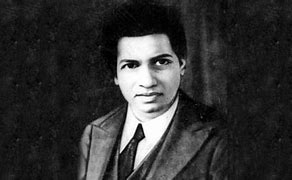Chandrahas Halai, a Mumbai based Maths scholar, likes to talk about the beauty of numbers and the genius of Bhaskaracharya the Indian mathematician and astronomer of 12th century AD. I wanted to ask his impressions on the "Ramanujan Machine", which is a novel way to do Mathematics by harnessing the power of computers to make new discoveries. The Israeli team which is working on this hopes that the project “will inspire future generations about mathematics and AI-driven science.”
Naming such a project after Srinivasan Ramanujan was an obvious choice, says Chandrahas. “He was an extraordinary genius in finding patterns.” He narrates the well recounted story of G H Hardy visiting his friend Ramanujan in hospital (Ramanujan suffered from poor health all his life).
By way of conversation, Hardy tells his friend that the number of the black cab he came in was an innocuous ‘1729’. To which the latter replied, ““No, Hardy, it’s a very interesting number! It’s the smallest number expressible as the sum of two cubes in two different ways.”
Tibi Puiu writes in Mathematics News - “Ramanujan had a fantastic memory and intuition about numbers. In the case of 1729, the number can be written as 1 cubed + 12 cubed and 9 cubed + 10 cubed. There’s no smaller integer that can be written as the sum of two cubes. The incident launched the “Hardy-Ramanujan number,” or “taxi-cab number”, a mathematical oddity that had mathematicians fascinated to this day. Only six other taxi-cab numbers have been found that share the same properties (smallest numbers which are the sum of cubes in n different ways).”
Ido Kaminer, Technion -Israel Institute of Technology, Haifa, Israel one of the founders of the Ramanujan Machine, writes along with this colleagues in Nature Magazine: “Fundamental mathematical constants such as e and π are ubiquitous in diverse fields of science, from abstract mathematics and geometry to physics, biology and chemistry. Nevertheless, for centuries new mathematical formulas relating fundamental constants have been scarce and usually discovered sporadically. Such discoveries are often considered an act of mathematical ingenuity or profound intuition by great mathematicians such as Gauss and Ramanujan. Here we propose a systematic approach that leverages algorithms to discover mathematical formulas for fundamental constants and helps to reveal the underlying structure of the constants. We call this approach ‘the Ramanujan Machine’."
They say the aim of the project is to support a different conceptual framework for research: “computer algorithms use numerical data to unveil mathematical structures, thus trying to replace the mathematical intuition of great mathematicians and providing leads to further mathematical research.”
Chandrahas points out that while the purpose of Engineering is to solve specific problems in the real world, Mathematics aims to provide formulae or equations or conjectures which if proved can apply to all numbers. To date, the Ramanujan Machine focused on two algorithms, variants of Meet-In-The-Middle (MITM) algorithm and a Gradient Descent (GD).





